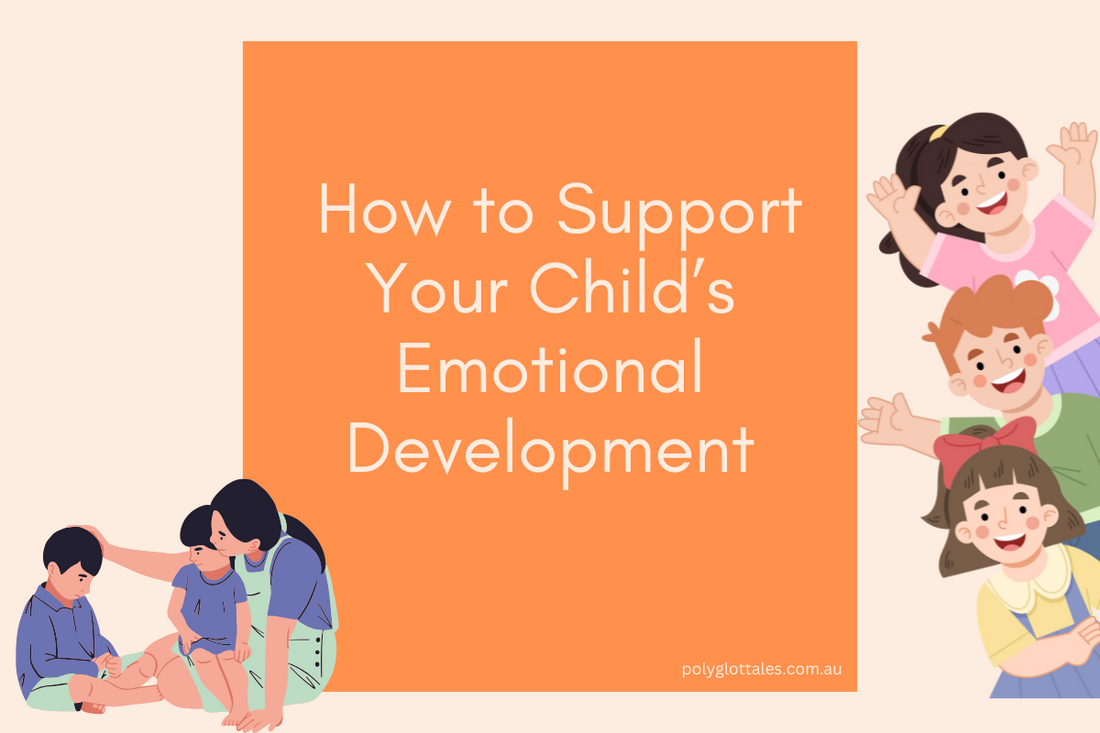As parents, we often focus on teaching our children academics, manners, and life skills, but one of the most crucial aspects of their growth is emotional development. Research suggests that children who develop strong emotional intelligence are better equipped to handle stress, build relationships, and succeed in various aspects of life (Goleman, 1995; Denham, 2007). Helping children understand and regulate their emotions lays the foundation for healthy relationships, resilience, and overall well-being. Here are some effective ways to support your child's emotional development.
1. Foster a Safe and Nurturing Environment
Children thrive in environments where they feel safe, loved, and accepted. According to attachment theory, a secure attachment with caregivers supports emotional regulation and confidence (Bowlby, 1988). Providing a supportive home where they can express themselves without fear of judgment encourages emotional growth. Make sure to be present, listen actively, and validate their feelings.
2. Teach Emotional Vocabulary
Young children often struggle to express how they feel because they lack the right words. Studies show that children who develop a strong emotional vocabulary are better at regulating emotions and interacting socially (Raver & Knitzer, 2002). Introduce them to a variety of emotions—happy, sad, frustrated, excited, nervous—and use real-life situations to help them identify their feelings. Books, storytelling, and role-playing are excellent tools for teaching emotional vocabulary.
3. Lead by Example
Children learn emotional regulation by observing the adults around them. Social learning theory suggests that children imitate the emotional expressions and coping mechanisms of their caregivers (Bandura, 1977). Show them how to manage emotions in a healthy way—whether it’s taking deep breaths when frustrated, talking about feelings, or finding constructive solutions to conflicts.
4. Encourage Empathy and Compassion
Teaching children to recognize and understand others' emotions fosters empathy. Research indicates that empathy development in early childhood predicts prosocial behavior and positive social interactions later in life (Eisenberg & Fabes, 1998). Encourage them to consider how others might feel in different situations. Reading books that explore emotions, engaging in pretend play, and discussing real-life experiences can all help build empathy.
5. Allow Space for Emotional Expression
Children need opportunities to express their emotions in healthy ways. Whether through talking, drawing, playing, or writing, providing outlets for expression can prevent emotional bottling and help them process their feelings effectively. Expressive arts therapy has been shown to enhance emotional processing in children (Malchiodi, 2005).
6. Guide Problem-Solving Skills
When children face emotional challenges, guide them in finding solutions rather than solving problems for them. Problem-solving skills are linked to higher emotional intelligence and better mental health outcomes (Durlak et al., 2011). Ask questions like, “What do you think we could do to make this better?” or “How would you like to handle this situation?” This helps them develop critical thinking and emotional resilience.
7. Establish Consistent Routines
Consistency provides children with a sense of security. Having predictable routines helps them navigate emotions better, especially during transitions such as bedtime, school drop-offs, or mealtimes. Research shows that structured routines help reduce anxiety and improve emotional regulation (Spagnola & Fiese, 2007).
8. Celebrate Emotional Wins
Acknowledge and celebrate when your child successfully navigates a challenging emotion or situation. Positive reinforcement helps reinforce emotional regulation strategies and builds confidence (Skinner, 1953). Phrases like “I saw how you calmed yourself down when you were upset—that was great!” reinforce positive emotional regulation.
9. Be Patient and Supportive
Emotional development is a lifelong process, and children will make mistakes along the way. Be patient and supportive as they learn. Avoid dismissing their emotions, and instead, guide them with warmth and understanding. Studies highlight that emotionally supportive parenting is linked to higher resilience and lower levels of emotional distress in children (Thompson, 1994).
By fostering emotional intelligence in your child, you equip them with the tools they need to build meaningful relationships, cope with challenges, and thrive in all aspects of life. Emotional well-being is just as important as physical and intellectual growth—so let’s nurture it with care and intention.
References:
-
Bandura, A. (1977). Social Learning Theory. Prentice-Hall.
-
Bowlby, J. (1988). A Secure Base: Parent-Child Attachment and Healthy Human Development. Basic Books.
-
Denham, S. A. (2007). Dealing with feelings: How children negotiate the worlds of emotions and social relationships. Cognition & Emotion, 21(1), 1-9.
-
Durlak, J. A., et al. (2011). The impact of enhancing students’ social and emotional learning: A meta-analysis of school-based universal interventions. Child Development, 82(1), 405-432.
-
Eisenberg, N., & Fabes, R. A. (1998). Prosocial development. Handbook of child psychology, 3(5), 701-778.
-
Goleman, D. (1995). Emotional Intelligence. Bantam Books.
-
Malchiodi, C. A. (2005). Expressive therapies. Guilford Publications.
-
Raver, C. C., & Knitzer, J. (2002). Ready to enter: What research tells policymakers about strategies to promote social and emotional school readiness among three-and four-year-olds. National Center for Children in Poverty.
-
Skinner, B. F. (1953). Science and Human Behavior. Macmillan.
-
Spagnola, M., & Fiese, B. H. (2007). Family routines and rituals: A context for child development. Infant and Child Development, 16(3), 285-299.
-
Thompson, R. A. (1994). Emotion regulation: A theme in search of definition. Monographs of the Society for Research in Child Development, 59(2-3), 25-52.

